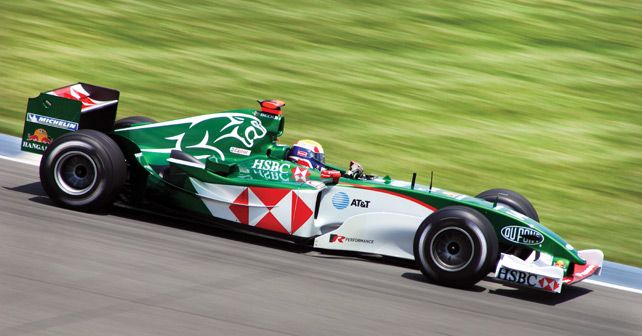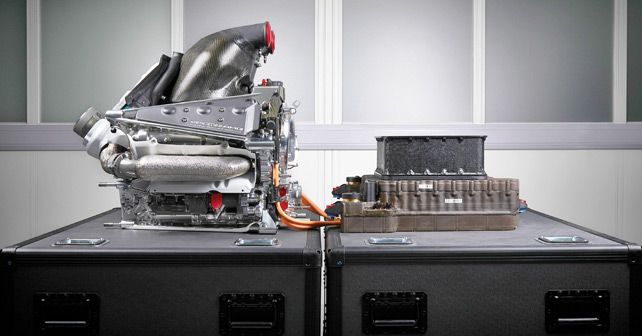
"The Formula 1 hybrid engine is the most efficient in the world and has a critical role to play to address the wider global environmental issue," - Formula 1 Chairman and CEO Chase Carey.
Image Credits: Rick Dikeman & Mercedes-AMG F1
At the Frankfurt Motor Show, Formula 1 Chairman and CEO Chase Carey made a big speech about changing the perceptions of the world towards Formula 1. He argued, quite rightly in my opinion, that the sport’s hybrid turbo engines will play a key role in in the future of carbon emissions in production cars.
‘The Formula 1 hybrid engine is the most efficient in the world and has a critical role to play to address the wider global environmental issue,’ Carey said. ‘While I appreciate electric has got the attention and has hit a sweet spot at the moment, I think electric will be part of the solution, but has issues – such as battery disposal – that still need to be addressed. We believe the hybrid engine and fuel technologies can play a big role – a leading role – in addressing the issue of carbon emissions.’
He also made the key point that the sport needs to address environmental issues off the track, particularly in relation to the way in which spectators arrive at racing circuits. The method of transportation of spectators is the principal source of emissions for any sports and the ultimate irony is that the most polluting sporting event in the world is the Tour de France bicycle race – because it attracts 14 million spectators each year, the majority of whom drive to watch the cyclists in action.
The adoption of hybrid turbos by F1 back in 2014 returned the championship to a leadership role in automotive technology. It’s an astonishing fact that, despite 135 years of constant and concentrated development, the petrol-powered internal combustion engine is still remarkably inefficient. The average road car engine today has a thermal efficiency of between 25-30%. The remainder of the energy that is released from burning fuel during combustion is lost in heat, carried away by the exhaust gases or absorbed into the cylinders and dissipated by the cooling system. Other energy is lost to friction, driving of pumps for water and oil or electric generators.
‘Going into 2014 we all said: Wouldn’t it be great if F1 could produce power units with greater than 40% thermal efficiency,’ says Andy Cowell of Mercedes Benz. ‘At the same time, there were many, many, very experienced people who thought that was ridiculous. In the end, all the manufacturers in F1 achieved that very quickly – and the journey has been continuously remarkable. And, on top of that, the durability requirement for the power units has increased significantly.’
The engines of today are truly remarkable pieces of engineering, being capable of 1,000hp, and yet being as efficient as they are.
‘I think the thermal efficiency, the peak power, the amount of electrical energy produced, the compact nature of the power units and the driveability are all remarkable,’ Cowell said in 2017. ‘If, back in 2012, you could have looked forward five years and seen what is now being done, you would conclude that it has been a truly remarkable half-decade of achievement.’
Let us not be naive and think that pushing the environmental credentials of Formula 1 is altruistic, as the sport needs a better image in order go into more city centres, as Formula E has done, and thus take the racing to the people, rather than trying to convince people to go to remote racing circuits in the countryside. This fits with the philosophy of F1 going to ‘destination cities’ and creating week-long festivals that will generate more revenues and more interest, and thus enable the sport to demand higher race fees, higher prices for media rights and to sell more tickets and other products.
But, cynical though that may sound, it’s only right and fair that F1 gets the recognition it deserves for what has been achieved. Yes, it’s true that they don’t sound as good as the old generation of normally-aspirated engines but there are two things one must consider when arguing that line. Firstly, the modern generations are sufficiently impressed by what they are seeing and hearing. It’s only the older fans who hark back to noisier times; and, secondly, the world is changing and burning gasoline for fun is not as socially acceptable as it once was.
All things considered, the decision to switch to hybrid turbos, made by the FIA, was the right decision at the time. It moved the sport in the right direction.
The sport, under different management, completely failed to make the most of its amazing progress, and so it’s great to see the Formula 1 Group drawing a line on this poor communication in the past and telling the world that not only is F1 a place to see great racing, but also that it’s relevant to each and every one of us. It may take time to filter the technology down to the industry – and some of it cannot be done on an industrial scale – but the gains that we’re seeing should mean that mankind’s consumption of fossil fuels will be extended for years-and-years.
Perhaps one day there will be electric racing cars in F1, but that may be a lot further into the future than promoters of electric mobility want to admit.
Joe Saward has been covering. Formula 1 full-time for 30 years. He has not missed a race since 1988.
Also read - Formula 1: A view from the other side


















Write your Comment